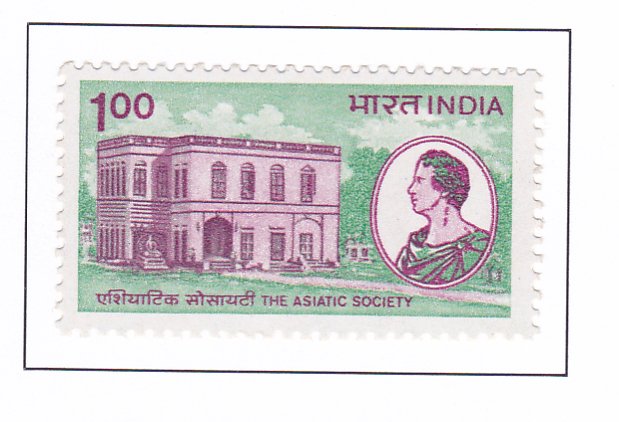Bicentenary of Asiatic Society

Technical Data
| Date of Issue | January 15, 1984 |
|---|---|
| Denomination | Rs. 1 |
| Quantity | 1,500,000 |
| Perforation | comb 12¾ x 13 |
| Printer | Security Printing Press, Nashik |
| Watermark | No Watermark |
| Colors | Multicolor |
| Catalog Codes |
Michel IN 978 Stamp Number IN 1045 Yvert et Tellier IN 793 Stanley Gibbons IN 1112 |
| Themes | Anniversaries and Jubilees | Buildings | Famous people | Men |
The Asiatic Society, founded on January 15, 1784, in Calcutta (now Kolkata), emerged from a proposal by Sir William Jones, an eminent educationist. The society aimed to investigate the history, antiquities, arts, sciences, and literature of India, with Sir William Jones as its President and Warren Hastings, the then Governor-General, as its patron. Its broad investigative scope, encompassing “Man and Nature, whatever is performed by one or produced by the other,” laid a solid foundation for scholarly and scientific activities in India.
Historical Significance:
- Foundation and Vision: The society was created to explore and document the vast cultural and scientific heritage of India. It served as a beacon of knowledge and a model for other Asiatic societies worldwide.
- Intellectual Contributions: Over the years, the Asiatic Society has maintained its commitment to the pursuit of truth and knowledge, thanks to the dedication of its intellectual community and members.
Key Contributions:
- Advisory Role: The society has advised the Indian government on scientific matters, significantly influencing the inception and development of various research institutions.
- Establishment of Institutions:
- University of Calcutta: One of India’s premier universities.
- Indian Museum: The oldest and largest museum in India.
- School of Tropical Medicine, Calcutta: A pioneer in medical research and education.
- Indian Science Congress: An annual event promoting scientific research and innovation.
- Geological Survey of India: A key organization in the study of India’s geology.
- Indian National Science Academy: A premier scientific society promoting science and technology.
Treasures and Collections:
- Manuscripts and Books: The society holds over 100,000 printed books and manuscripts in various European and Asian languages. This includes 30,000 Sanskrit manuscripts dating back to the 7th century A.D. and 6,000 manuscripts in Arabic, Persian, Turkish, Pashto, and Urdu from the 12th century A.D.
- Art and Paintings: The society’s collection features rare paintings by artists like Robert Home, Rubens, Guido, Domenichino, and Reynolds.
- Historical Documents: It possesses legal documents, such as those related to the Chittagong Armory Raid case, offering valuable insights into India’s socio-economic history during the 19th and early 20th centuries.
Scholarly Impact:
- Humanistic Studies: The society pioneered modern investigations into various aspects of humanistic studies in India, including language, literature, philology, numismatics, religion, philosophy, and folklore.
- Cultural Progress: Through its extensive research and publications, the society has significantly contributed to cultural and social progress, fostering international goodwill.
Recognition:
To honor its bicentenary and enduring contributions, the Indian Posts & Telegraphs Department issued a commemorative stamp, celebrating the Asiatic Society’s legacy as a beacon of knowledge and its role in advancing cultural and scientific understanding.
